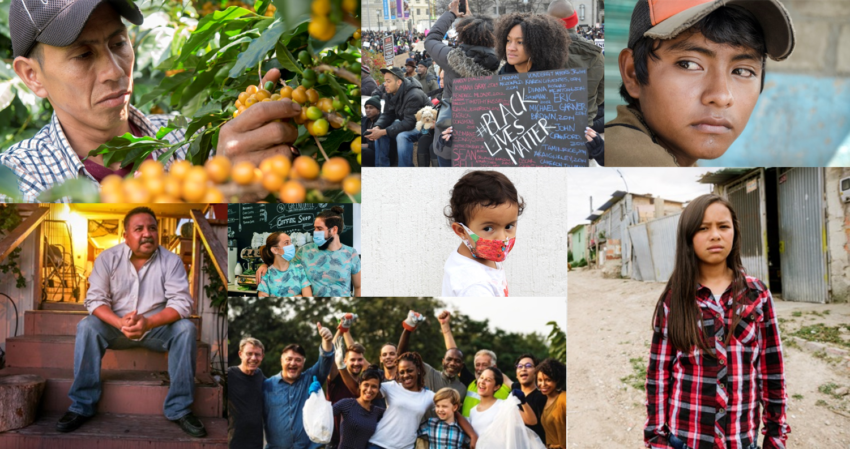
Share On Social!
Do you notice how much some of your neighbors are suffering?
A widening socioeconomic gap, racism, and discrimination contribute to inequitable distribution of healthcare and mental and physical health disparities among Latinos and other people of color and those in poverty, especially amid COVID-19.
But it doesn’t have to be this way.
A cohesive culture for health equity is one where everyone works individually and as a group to ensure that each person has a fair, just opportunity for health and wealth, as well as equitable access to basic resources required for these goals.
To achieve a more cohesive culture, we must help people understand and overcome the mechanisms─implicit bias, system justification, moral disengagement─they use to discriminate against people of color and/or justify poverty.
Intergroup contact, peer modeling, awareness-provoking interventions, and use of targeted social media can improve social cohesion and compassion toward minority and impoverished out-groups. These actions also can counteract stereotypes, and reduce health disparities and inequities.
Quick Links
Full Research Review (PDF) | News Release (PDF)
Fact Sheet: How Poverty and Discrimination Impacts Health & Opportunity
Guides: Implicit Bias | System Justification | Moral Disengagement
About the Research Review
Introduction and Methodology. This review assesses available research on the social and health impact of poverty, and the impact of racism and bias on people of color and those in poverty.
The review also highlights strategies and interventions to alleviate poverty, improve social cohesion, reduce bias, and increase compassion toward all groups to contribute to a cohesive culture with health equity.
Key Research Results: Poverty Contributes to Inequities in Health and Opportunity
Latino families are more likely to live in poverty than white families. Child poverty rates are more than twice as high for Latino children than White children (23.7% vs 8.9%). Poverty’s material hardships─difficulty meeting basic food, medical, housing, and transportation needs─lead to worse health and life outcomes.
 Even in rural areas, Latinos face poverty and other inequities. In the 1990s, Latino immigrants began to migrate to rural areas. The individual poverty rate was 21% higher in new Latino rural destinations compared to established rural areas.
Even in rural areas, Latinos face poverty and other inequities. In the 1990s, Latino immigrants began to migrate to rural areas. The individual poverty rate was 21% higher in new Latino rural destinations compared to established rural areas.
The Affordable Care Act (ACA) improved Latino healthcare coverage, but gaps remain. Due to the ACA, the percentage of U.S. adults with no health insurance fell from 20.5% in 2013 to 12.3% in 2017. But the uninsured rate remains higher among Latino (25.1%) than White adults (8.5%).
Key Research Results: Discrimination Contributes to Inequities in Health and Opportunity
Racial/ethnic discrimination impacts educational attainment, which, in turn, impacts future educational, health, social, and career opportunities for people of color. Children of color are often treated differently by school personnel; they are more likely to be harshly punished for minor infractions, and teachers may underestimate their abilities. The high school dropout rate among Latino students is 17.6%; higher than Black (9.3%) and White students (5.2%). Lower educational attainment among Black and Latino students is linked to an increased risk of institutionalization, poorer physical and mental health, and reduced lifetime earning/economic potential.
Racial/ethnic discrimination also hinders people of color in other ways. Most people of color say they have experienced discrimination or unfair treatment due to their race or ethnicity from time to time or regularly, including 76% of Blacks and Asians and 58% of Latinos, compared to 33% of Whites. More Americans say that being Latino hurts people’s ability to get ahead in this country (51%) than say it helps (18%). More Latinos than Whites also say they have been treated unfairly in hiring, pay, or promotion (26% to 19%).
Key Research Results: The Problem of Implicit Bias and Discrimination
Implicit bias exists, is problematic, and needs to be addressed.
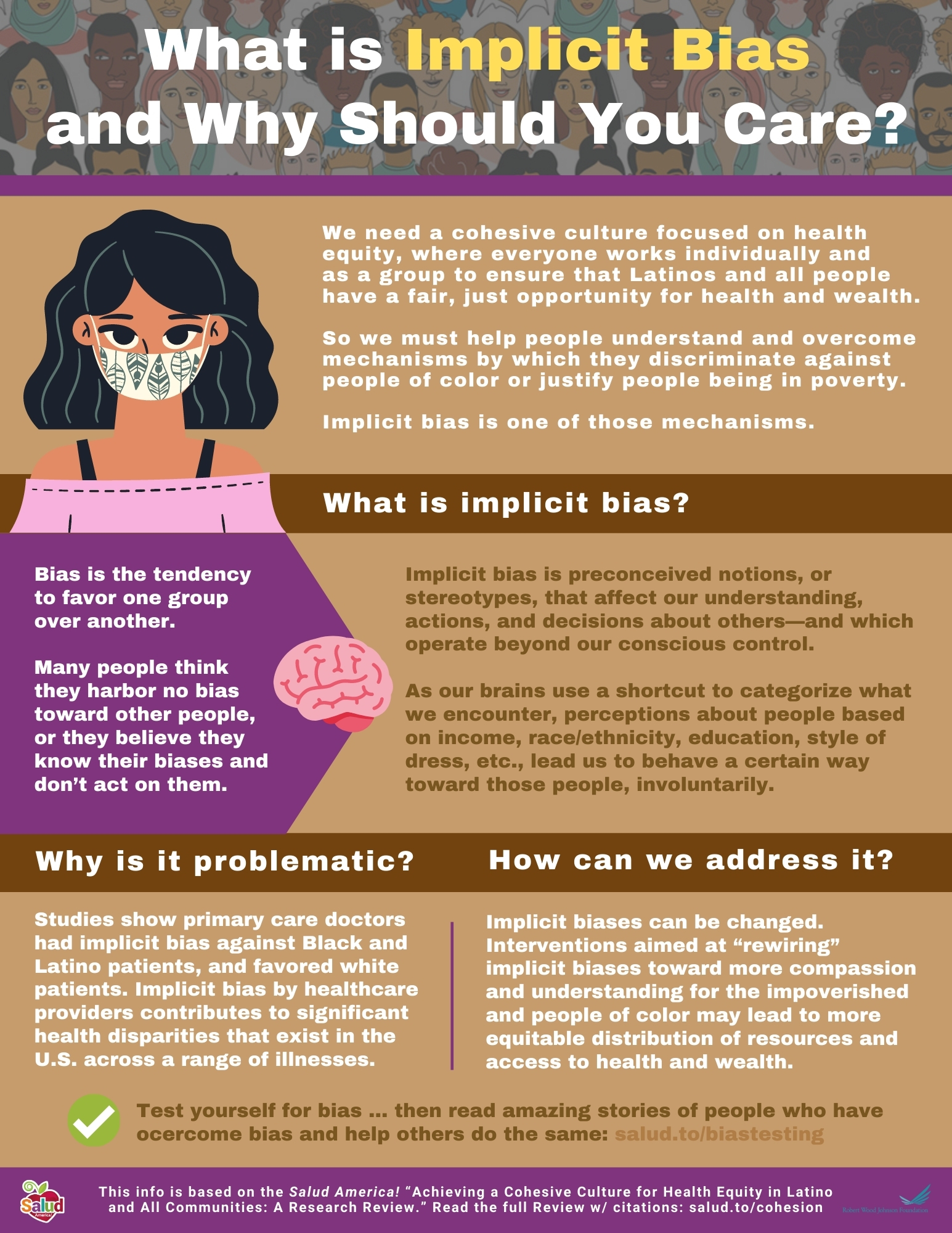
Most people think they harbor no bias toward other people, or they believe they know their biases and don’t act on them. But all people have implicit bias. Implicit bias is preconceived notions, or stereotypes, that affect our understanding, actions, and decisions about others—at a level beyond our conscious control. As our brains use a shortcut to categorize everything we encounter, perceptions about people based on socioeconomic status, race/ethnicity, etc., lead us to behave a certain way toward those people, involuntarily.
Implicit bias has a real-world effect on behavior. It impacts employment, education, criminal justice, and more. Most healthcare providers, for example, have implicit bias─positive attitudes toward white patients, and negative attitudes toward patients of color.
Fortunately, implicit biases are malleable. This means these unconscious associations can be “unlearned” and replaced with new mental associations.
Read more: Implicit Bias: A Guide to Reducing Excuses for Discrimination against People of Color, Those in Poverty
Key Research Results: The Problem of System Justification and Discrimination
System justification exists, is problematic, and needs to be addressed.
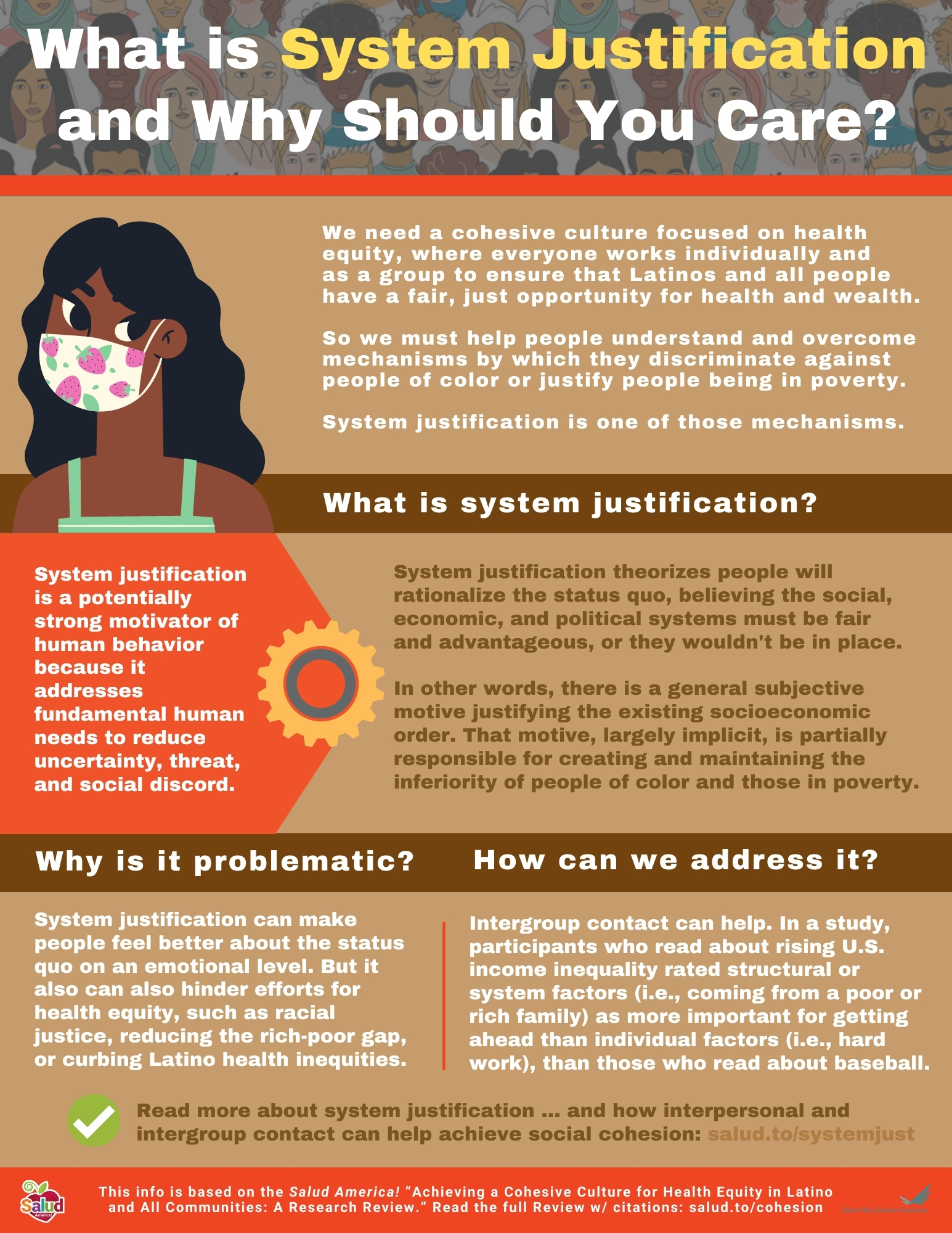
System justification theorizes that many people rationalize the status quo. They believe that the social, economic, and political systems must be fair, otherwise they would not be in place. That motive is partially responsible for creating and maintaining the inferiority of racial/ethnic and other minority groups and is largely implicit.
System justification can make people feel better and happier with the status quo on an emotional level. But it also can also interfere with efforts to promote social justice, such as the rich-poor gap or racial/ethnic inequities. In one study, people who exhibited greater system-justifying beliefs were more likely to support pro-business and pro-traditional American values movements, and less likely to support movements to restore social and economic justice.
Key Research Results: The Problem of Moral Disengagement and Discrimination
Moral disengagement exists, is problematic, and needs to be addressed.
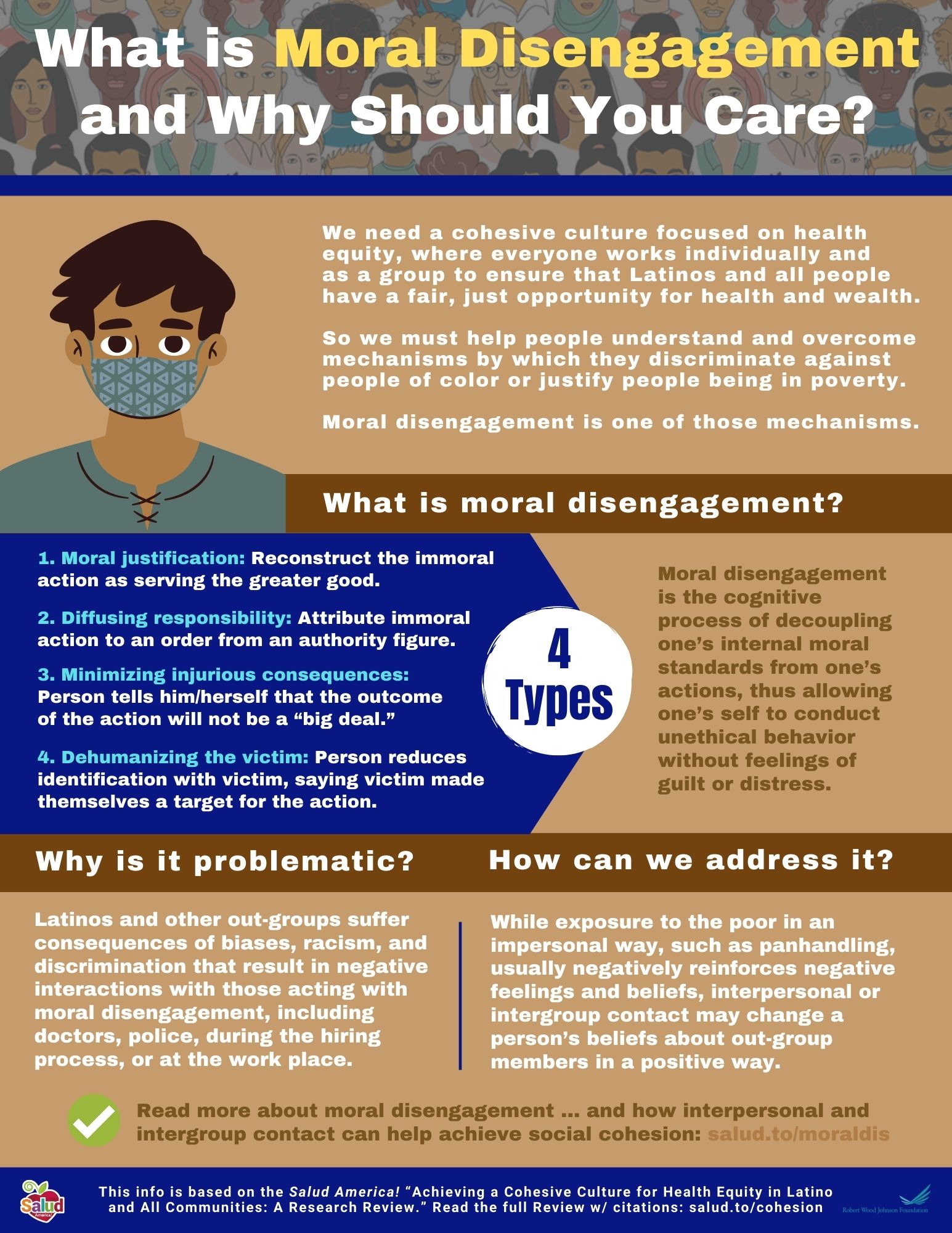
Moral disengagement is the mental process of decoupling one’s internal moral standards from one’s actions─allowing one’s self to conduct unethical behavior without feelings of guilt or distress. In simpler terms, it is mentally rationalizing bad decisions, such as dehumanizing the victim or diffusing responsibility, by convincing oneself that ethical standards do not apply within a particular context or situation.
Latinos and other out-groups suffer the consequences of discrimination that result in negative interactions with those acting with moral disengagement at the doctor’s office, with law enforcement officials, during the hiring process, or at the work place.
For example, a perceived threat to the identity associated with the in-group, such as the belief that an influx of unskilled immigrants will result in lower wages and higher rates of unemployment for non-immigrants or the goal to preserve the national language, can result in moral disengagement-based discrimination and prejudice toward immigrants.
Key Research Results: Emerging Solutions for a Cohesive Culture
Intergroup contact theory. Members of one group, having incomplete or inaccurate ideas about members of another group, can positively change their beliefs and attitudes toward that group via contact (either face-to-face or other interactive, even digital, methods). One study found that more interpersonal contact with Latino immigrants predicted fewer calls for lower immigration rates, fewer calls for increased border security, etc.
 Peer modeling. Peer modeling promotes positive intergroup attitudes via the knowledge that an in-group member has a close relationship with an out-group member. The in-group friendship partner becomes a positive peer model, demonstrating tolerance in interacting with the out-group. The out-group friendship partner becomes a positive example that repudiates the negative beliefs about the out-group.
Peer modeling. Peer modeling promotes positive intergroup attitudes via the knowledge that an in-group member has a close relationship with an out-group member. The in-group friendship partner becomes a positive peer model, demonstrating tolerance in interacting with the out-group. The out-group friendship partner becomes a positive example that repudiates the negative beliefs about the out-group.
Implicit bias training. Implicit bias training programs aim to improve intergroup attitudes and relations by “rewiring” subconscious associations. These kinds of trainings and those that use the implicit-association test (IAT)─which measures the strength with which race/ethnicity are associated with attributes such as good or bad─can be useful tools within a comprehensive organizational training program directed toward understanding and addressing individual unconscious bias.
Effective communication. Effective communication allows individuals to voice their points of view without attacking another’s views, and without feeling attacked. Key elements include: setting ground rules and structures for speaking; listening to others; allowing equal participation; sharing core beliefs; exploring doubts and uncertainties; asking genuine questions of others; and avoiding inflammatory language.
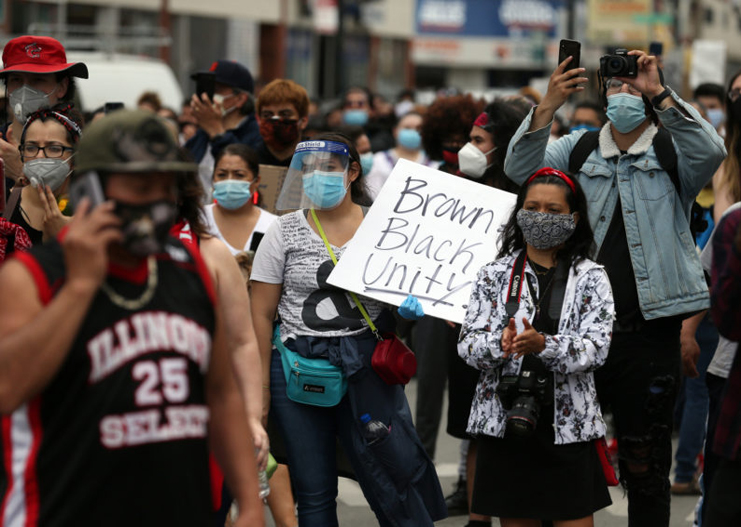 Social media for social change. Social media can be used to bring people together, and bring about social change. The #BlackLivesMatter movement began on Twitter in 2016 after the shooting death of Trayvon Martin. Amid the subsequent deaths of Freddie Gray, Breonna Taylor, George Floyd, and others at the hands of police, the movement has reached and engaged millions of people across America. The organization has chapters in more than 30 cities across the United States.
Social media for social change. Social media can be used to bring people together, and bring about social change. The #BlackLivesMatter movement began on Twitter in 2016 after the shooting death of Trayvon Martin. Amid the subsequent deaths of Freddie Gray, Breonna Taylor, George Floyd, and others at the hands of police, the movement has reached and engaged millions of people across America. The organization has chapters in more than 30 cities across the United States.
Key Research Results: Building Social Cohesion
Social cohesion represents the capacity of a society to ensure the long-term physical and psychological well-being of its members. A cohesive society is an inclusive one; a society without significant disparities in health, wealth and income, one that values individuals’ backgrounds, integrating those from different backgrounds in such a way that everyone can relate to one another.
However, social cohesion has declined in the U.S., mainly due to deprivation and inequality experienced by those in poverty. Fortunately, an increase in social cohesion can create feelings of solidarity. This manifests as eagerness to help others, on an individual level, and enhanced social support systems, on an institutional level.
Social interaction with others does affect health outcomes, as relationships can facilitate the sharing of resources, help increase opportunities, and improve livelihood.
Implications for Policy and Future Research
Policy Implications. Promote intergroup contact early on, as contact has an inverse relationship with prejudice. Local leadership should recruit leadership from within the Latino community and other communities of color, creating a collaborative and integrated community. Emphasize collaboration among government and other agencies for equitable investment in health, housing, economic development, and other community needs. Health services should be culturally competent.
 Future Research Needs. Researchers must continue studying physical and mental health disparities to uncover the impact of race/ethnic discrimination, poverty, and other social determinants of health. More research also should examine relationships among implicit bias, moral disengagement, and system justification and health care outcomes. This will guide interventions to target these justifications of poverty and bias. Equally important is the need to reverse racial/ethnic stereotypes and educate people about poverty. This also requires a direct refutation of mechanisms of moral disengagement by debunking the idea that social programs create dependency. As McAlister et al. put it, reducing disparities among the poor “requires change in the heart and minds of the more fortunate.”
Future Research Needs. Researchers must continue studying physical and mental health disparities to uncover the impact of race/ethnic discrimination, poverty, and other social determinants of health. More research also should examine relationships among implicit bias, moral disengagement, and system justification and health care outcomes. This will guide interventions to target these justifications of poverty and bias. Equally important is the need to reverse racial/ethnic stereotypes and educate people about poverty. This also requires a direct refutation of mechanisms of moral disengagement by debunking the idea that social programs create dependency. As McAlister et al. put it, reducing disparities among the poor “requires change in the heart and minds of the more fortunate.”
References
See the Full Research Review with references (PDF)
About the Authors
- Amelie G. Ramirez, Dr.P.H., Director, Salud America!, Professor, Institute for Health Promotion Research, UT Health San Antonio
- Rosalie Aguilar, M.S., Project Coordinator, Salud America!, Institute for Health Promotion Research, UT Health San Antonio
- Cliff Despres, B.J., Communications Director, Salud America!, Institute for Health Promotion Research, UT Health San Antonio
- Erin Surette Dembeck, P.A. (ASCP)
- Caroline Gamse, Ph.D., CG Medical Works, L.L.C.
This report is copyright 2020 RWJF, Route 1 and College Road, P.O. Box 2316, Princeton, NJ, 08543-2316, www.rwjf.org.
By The Numbers
3
Big Excuses
people use to justify discriminatory behavior



